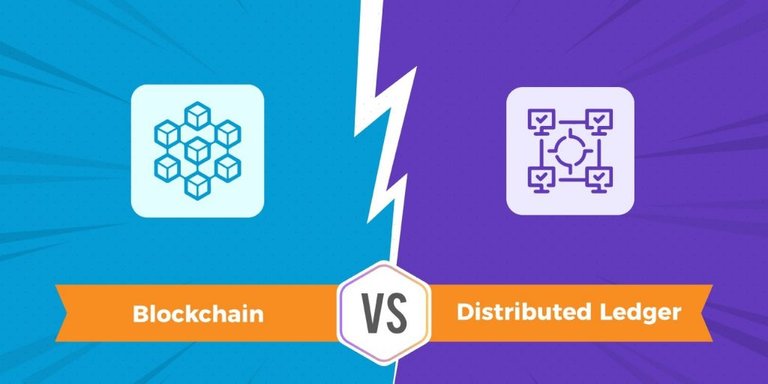Distinction between Blockchain and Distributed Ledger: A Guide
The use of blockchain and distributed ledger has now been popularized as a concept in the technological and financial arenas in the present era of digitization. These ideas are popular because of their capacity to transform many sectors. Nonetheless, one should take notice that blockchain technology has its different from distributed ledger systems.
Understanding distributed ledger technology
A distributed ledger is simply an array of distributed databases in the form of peer-to-peer communication. Every specific node has a copy of equal ledger copy. Each of these nodes update themselves independently by participating in the network. The distributed ledger technology is also revolutionary because the ledger is not controlled by any central authority. The ledger is individually created and updated by each node. Next, the nodes vote on the updates made so as to ensure that they form a majority, and hence agree with the end result. The consensus algorithm involves voting, agreeing on one copy of a ledger, and this all happens automatically. In this case, a shared ledger system updates itself and creates the newest version that is kept with independence in every node after an agreement has been reached.
In addition, distributed ledger technologies considerably cut the cost for trust. The architecture and structure of distributed ledgers may help to relieve us from relying heavily on bank’s, governments, lawyers, as well as compliance officers. The distributed ledger has challenged an age long paradigms of collecting and sharing information, which are poised to transform business practices between people, enterprises and government.
Understanding Blockchain Technology
Distributed ledger technology includes blockchain technology. Not every distributed ledger guarantees an actual and reliable distributed consensus through the blockchain. These networks oversee the distributability of a blockchain that is spread across the peer-to-peer network. Because it is a distributed ledger that can coexist without a central authority server, as well, its data quality can be retained through database replication and computational trust. Nevertheless, its structure makes it unique compared to other networks. Each piece of information about a blockchain is stored and presented in blocks. Thereafter, the individual pieces are joined up through cryptography.
However, at its core, a blockchain is simply a growing list of transactions. The database uses a system that merely appends data. Once any item of data gets into the database, the data cannot be altered or removed. Hence, blockchain can be used in keeping records of events, document management, transaction processing, item tracking and voting as well.
Blockchain technology was introduced by Bitcoin and other cryptocurrencies. In late 2017, when bitcoins rallied massively and the media created a furore over cryptos, they caught the attention of everyone. Blockchains are now being reviewed by various governments, businesses, economists, and enthusiasts for other potential uses.
What is the difference between blockchain and distributed ledger?
The term distributed ledger technology refers to systems which enable decentralized processing, verification and recording of transactions over a public network on one single database. Think about it as a mechanism for keeping records of many who add to a database that is made up and updated through all the contributors copies. Blockchains are specific types of distributed ledgers in which each newly created unit is verified through the use of cryptography. Hence, the system calls for a so called trusted third party that is also known as an administrator responsible for checking all network transfers and preventing double expenses. Hereby, Blockchain becomes an anonymous less databased where only pseudonyms are presented.
Unique is that it’s impossible to alter or erase individual transactions data using blockchain in contrast with other DTLs. It is almost impossible for records modification without modifying every succeeding block as each block has details of the previous one. Simply put, a blockchain is a distributed decentralized ledger. The distinction between blockchain technology and distributed ledger is thin as they are nearly the same. Distributed ledger is a decentrailised database that can track the exchange of any valuable thing.
The Block Architecture
Each Block in the Blockchain is made up of multiple transactions. The term “Transaction” denotes the transfer of money (funds) or tokens among two or other subjects. PoW redundant algorithm is used, with every transaction recording in the one blockbook.
The Sequence
Every block receives its identification number; however, the identification number establishes which position it takes along with other blocks within the Blockchain. In relation to Blocks, there is communication of one or more transactions that constitute a block. Every node bears its own identity number as well, thus eliminating any instances of repetition as other nodes are programmed to reject such blocks.
Real-world Applications
The first Blockchain was presented by Satoshi Nakamoto in 2008 and is now an integral part of Bitcoin. In this respect, it means a distributed consensus ledger of a peer-to-peer network. In brief, the blockchain is a public diary of the whole cryptocurrency system that is periodically updated upon every transaction and registered entry, and distributed on every participating node of the system.
In essence, a blockchain is basically a distributed ledger system. The common ledger is maintained by everyone and no one person has dominion over it. Here, cryptography ensures this security as each user has a private key that enables them to use their funds and or perform any transaction in their account without informing anybody else.
Transactions are validated through Proof of Work (PoW) on the blockchain. This represents a computing intense system used to authenticate and incorporate of block into the chain. Such prevents the data being inputted to a blockchain from tampering and fabrication.
To start with, Bitcoin miners need to solve complex mathematical problems before adding data blocks to the Blockchain. It comes with fresh bitcoins that are convertible into dollars and a chance to solve such a problem earns one more points. Proof of work is defined as the solving of these mathematical puzzles before adding a block to the blockchain.
Use of Tokens
These are digital assets known as tokens. New cryptocurrencies can be created on the blockchain. In most cases, the token introduction does not stand out. Someone copies the code of an existing cryptocurrancy, rebrands it and releases a few coins to the market. However, Blockchain token creation is one of the important elements in the blockchain ecosystem. Via tokens, developers can create their earnings models and set own rules.
In conclusion
The concepts of blockchain technology and the distributed ledger both represent revolutionary transformations on how the world perceives data, as well as transactions conducted in the virtual world. Blockchain is only a certain form of the concept of distributed ledgers as it includes other models of decentralized databases systems. Blockchain and distributed ledgers have more advantages over traditional centralized systems though each of them comes with unique traits and purposes.



https://inleo.io/threads/wealthwess/re-wealthwess-2oowncfps
The rewards earned on this comment will go directly to the people ( wealthwess ) sharing the post on LeoThreads,LikeTu,dBuzz.
Thanks for your contribution to the STEMsocial community. Feel free to join us on discord to get to know the rest of us!
Please consider delegating to the @stemsocial account (85% of the curation rewards are returned).
You may also include @stemsocial as a beneficiary of the rewards of this post to get a stronger support.